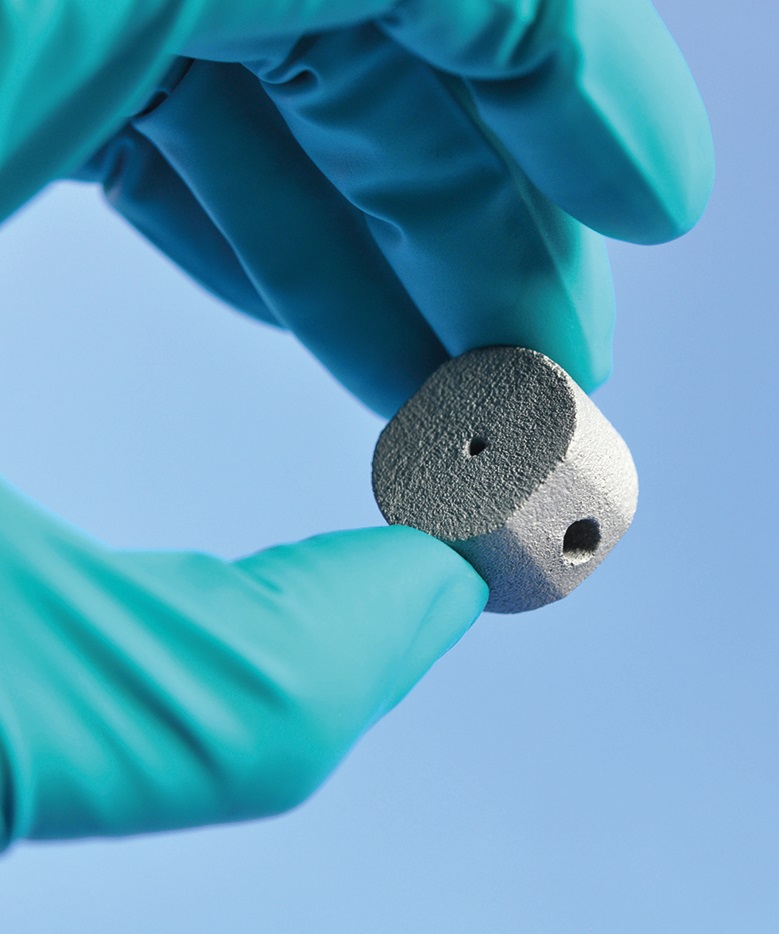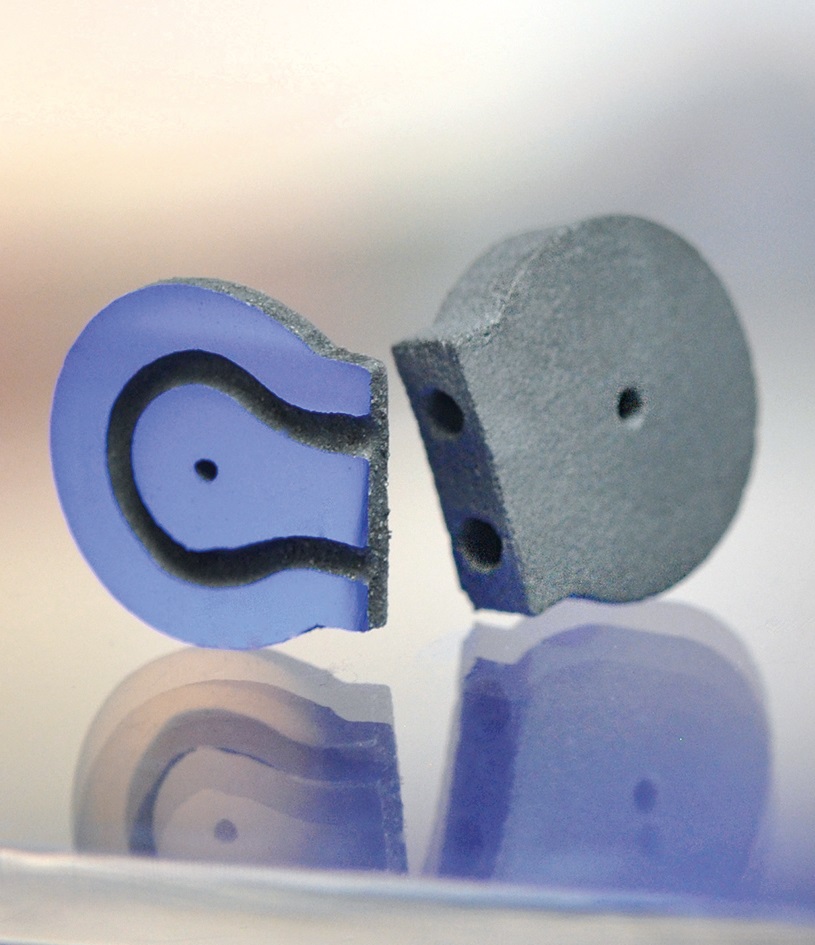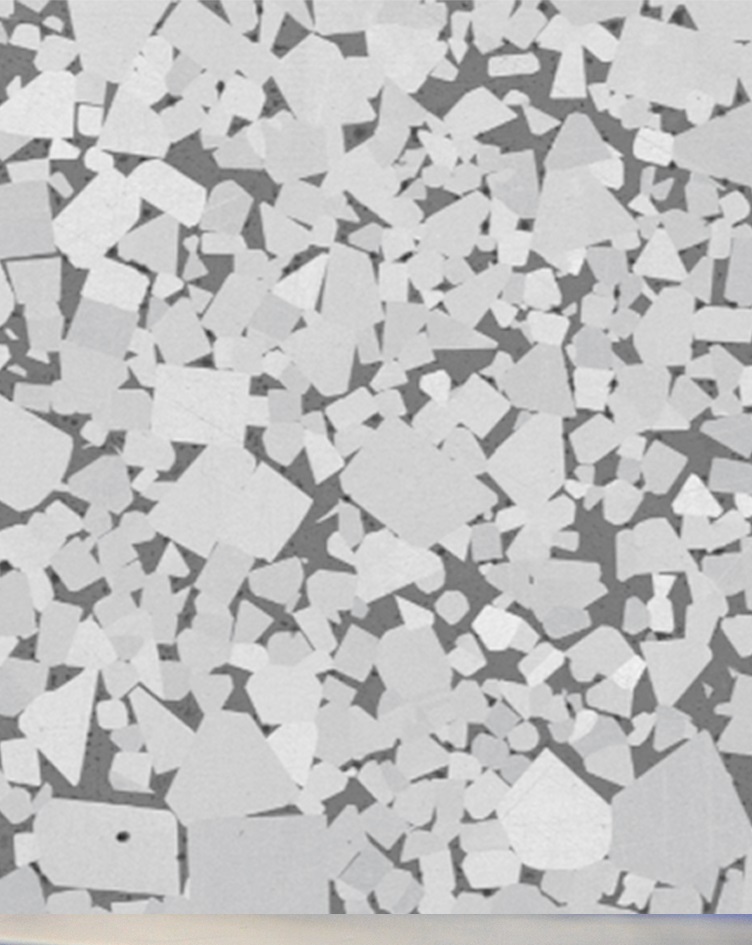


Additive manufacturing of hardmetal tools
With a more sophisticated tool design, it is possible to achieve a higher tool productivity and optimize the associated processes. In traditional tool manufacturing, complex geometries, such as helical or U-shaped cooling channels inside components or surfaces with undercuts, can often only be implemented at high costs, if at all.
The powder-based 3D printing method (also known as “binder jetting”) allows highly complex hardmetal parts to be manufactured. In the additive manufacturing method employed, optimally adapted starting powders or granules are deposited layer by layer and locally wetted and bonded by an organic binder applied with a printing head. The manufactured green parts then undergo binder burnout and sintering under conventional conditions. The sintered parts show a microstructure typical for hardmetals with a density of virtually 100 % and a homogeneous cobalt binder distribution. The material properties of the 3D-printed parts are comparable to those of hardmetal tools made via conventional shaping routes (e.g., uniaxial dry pressing).
In addition to novel geometries, rapid manufacturing of green parts in only one step and without the costly manufacturing of pressing tools or metal injection molding tools is now possible. This is especially relevant for prototypes and small batches.
Hardmetal green parts can be developed both via the powderbased method and using the suspension-based thermoplastic 3D printing (T3DP) method.
Services offered
- Product-specific development of powder- and suspensionbased 3D printing for WC-Co hardmetals
- Adaptation of processes to other compositions and materials systems
- Manufacturing of prototype parts made of hardmetals according to customer requirements